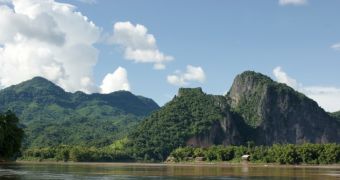The United States Geological Survey (USGS) says that, according to the findings of a recent investigation, the Mekong River Basin is currently “sprinkled” with what researchers call hotspots of persistent organic pollutants.
On its website, the USGS details that, in order to pin down such pollution hotspots, scientists analyzed samples of wetland sediments collected from various regions of the Mekong Basin.
All in all, they analyzed 531 samples collected from as many as 450 wetlands spread across five countries in Southeast Asia, and focused on identifying local concentrations of 39 persistent organic pollutants.
It was thus discovered that, although pollution levels across the entire Mekong River Basin are now relatively low, there are certain areas where contaminants concentrations exceed safe limits.
By the looks of it, accumulations of DDT (dichlorodiphenyltrichloroethane) and endosulfan were found to be the biggest problem.
Interestingly enough, the use of the first of these chemical compounds is now banned in the countries that the researchers focused on.
Its presence in the environment in fairly high concentrations might be evidence that people there are still illegally using it.
Endosulfan, on the other hand, is currently being phased out in the United States and in several other regions across the world.
The specialists who took part in this investigation warn that the presence of such hotspots of persistent organic pollutants in the Mekong River Basis constitutes a threat to both people and wildlife in the region.
They further detail that, as shown by several previous studies, exposure to these chemical compounds can cause several health problems in humans.
More precisely, it can affect reproductive, developmental, behavioral, neurologic, endocrine, and immunologic processes, the USGA tells us.
The researchers who helped identify pollution hotspots in the Mekong River Basin say that they plan to share the findings of this investigation with officials in their own countries.
They hope that, once they raise awareness of this threat to wildlife and people in the Mekong Basin, authorities and lawmakers will intervene and help solve the problem.
What's more, they plan to carry our further research in the area, and hope that this work will also prove beneficial to ongoing conservation efforts.
“The overall results of this study provide crucial baseline data that will guide future development and conservation efforts in the Mekong Basin,” Scott Wilson with the USGS National Wetlands Research Center said in a statement.
“Future work will focus on the classification and distribution of wetlands in the Mekong River Basin, an investigation into heavy metal contamination, and surface elevation monitoring in the coastal area of Southeast Asia,” he added.

 14 DAY TRIAL //
14 DAY TRIAL //